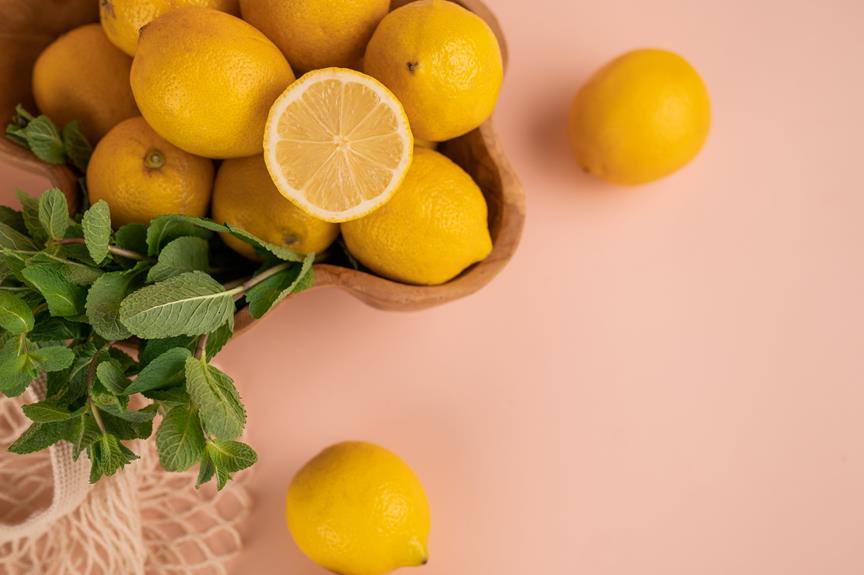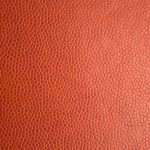Wondering if PVC bag material is the right fit for your upcoming project? Let's dive into the factors that make it a popular choice for many.
From its renowned durability and water resistance to its array of design options, PVC offers a compelling package.
However, it's essential to consider the environmental impact, potential health risks, and cost-effectiveness before making a decision.
This guide will provide you with a comprehensive overview, allowing you to make an informed choice for your next endeavor.
Key Takeaways
- PVC bag material is highly durable, resistant to wear and tear, and has excellent abrasion resistance.
- It comes in a wide range of color options and allows for versatile design without compromising durability.
- PVC bag material is equipped with advanced waterproofing technology, making it ideal for protection against the elements.
- Choosing eco-friendly alternatives like organic cotton, jute, hemp, recycled PET, or cork can help reduce environmental impact and support a greener future.
Durability and Water Resistance
When considering durability and water resistance, PVC bag material offers a reliable and long-lasting option for your next project. The material strength of PVC makes it highly resistant to wear and tear, ensuring that your bag will withstand the test of time. Additionally, PVC comes in a wide range of color options, allowing for versatility in design without compromising on durability.
PVC bag material is also equipped with advanced waterproofing technology, making it an ideal choice for items that need protection from the elements. This feature ensures that your belongings remain safe and dry, even in the harshest of conditions. Furthermore, PVC exhibits excellent abrasion resistance, meaning it can withstand friction and rough usage without showing signs of damage.
Environmental Impact
When considering the environmental impact of PVC bag material, it's important to explore its recyclability, potential eco-friendly alternatives, and the emissions generated during PVC production.
Understanding these points will provide insight into the sustainability of PVC as a material choice for your project.
PVC Bag Recycling
If you're considering PVC bag material for your next project, you should be aware of the environmental impact of PVC bag recycling.
PVC bag recycling offers significant benefits to the environment. It reduces the amount of plastic waste in landfills and minimizes the need for new raw materials, making it a sustainable solution.
By recycling PVC bags, you contribute to the conservation of resources and energy, as the production of new PVC bags requires a considerable amount of both. Additionally, recycling PVC bags helps in reducing greenhouse gas emissions and pollution associated with the manufacturing process.
Eco-Friendly Alternatives
Consider using more eco-friendly alternatives for your project to minimize environmental impact and contribute to sustainability. When looking for sustainable options, prioritize ethical sourcing and biodegradable materials made from renewable resources. Here are some alternatives to consider:
- Organic Cotton: Look for bags made from organic cotton, which is grown without toxic chemicals and promotes soil health.
- Jute: Jute bags are biodegradable, durable, and made from a renewable resource, making them an eco-friendly choice.
- Hemp: Hemp is a fast-growing, low-impact crop that can be used to create sturdy and sustainable bags.
- Recycled PET: Consider bags made from recycled polyethylene terephthalate (PET) bottles, reducing plastic waste and promoting circular economy.
- Cork: Bags made from cork aren't only stylish but also sustainable, as cork is harvested from the bark of cork oak trees without harming them.
Choosing eco-friendly alternatives can help reduce your environmental footprint and support a greener future.
PVC Production Emissions
Opt for PVC bag materials only if the production emissions have been significantly reduced by the manufacturer. When considering PVC, it's crucial to understand the environmental impact of its production process. PVC, also known as polyvinyl chloride, is produced through the process of polymerization, which involves the release of harmful pollutants into the atmosphere. The production process emits significant amounts of greenhouse gases, including ethylene and chlorine, which contribute to air pollution consequences. Manufacturers have been working to minimize these emissions through technology and process improvements. Below is a comparison table illustrating the environmental impact of PVC production emissions when not mitigated versus when significant efforts are made to reduce them:
| Environmental Impact | Production Emissions |
|---|---|
| Not Mitigated | High |
| Significant Efforts | Reduced |
Health Risks
When considering PVC bag material for your next project, it's important to be aware of the potential health risks associated with its use. PVC has been linked to toxicity and harmful environmental impact, prompting a need for exploring safer alternatives.
Understanding the health implications of PVC can help you make an informed decision about the material for your project.
PVC and Toxicity
If you're concerned about the potential health risks associated with PVC, it's important to understand the potential toxicity of this material. When considering PVC and its potential toxicity, here are some key points to consider:
- Toxicity concerns: PVC can release toxic chemicals, such as dioxins, during its production and disposal.
- Manufacturing process: The manufacturing of PVC involves the use of hazardous chemicals and can lead to the release of toxic by-products.
- Long term effects: Exposure to PVC and its additives over time has been associated with various health issues, including respiratory problems and certain types of cancer.
- Regulatory standards: There are regulatory standards in place to limit the use of certain PVC additives and control emissions, but concerns about its toxicity persist.
- Health implications: It's crucial to consider the potential long-term health implications of using PVC in your projects, especially in applications where it may release harmful chemicals.
Environmental Impact
Considering the potential health risks, it's essential to assess the environmental impact of PVC bag material for your next project. Environmental regulations and sustainability practices play a crucial role in evaluating the overall impact.
PVC manufacturing processes can have a significant carbon footprint, contributing to environmental concerns. The production of PVC involves the use of fossil fuels and the release of greenhouse gases, which can contribute to climate change. Additionally, the disposal of PVC products can lead to the release of harmful chemicals, further impacting the environment.
When considering PVC for your project, it's important to weigh these factors and explore alternatives that align with sustainable practices and environmental regulations. Understanding the manufacturing processes and the carbon footprint associated with PVC can help make an informed decision for your next project.
Alternatives and Safety
To address health risks associated with PVC bag material, it's important to explore alternatives and safety measures, as these factors directly impact your decision for the next project. When considering safety concerns and eco-friendly options, there are several alternatives to PVC bag material that you can consider:
- Recycled PET (rPET) bags: These are made from recycled plastic bottles, reducing the environmental impact.
- Organic cotton bags: These are biodegradable and don't pose health risks associated with PVC.
- Jute bags: Jute is a natural fiber that's sustainable and biodegradable, making it a safe alternative to PVC.
- Canvas bags: These sturdy bags are reusable and free from harmful chemicals, making them a safe choice.
- Cork bags: Cork is a natural and renewable material that's both eco-friendly and safe for everyday use.
Consider these alternatives to PVC for a safer and more environmentally friendly choice.
Cost-Effectiveness
When choosing bag materials, consider PVC for its cost-effectiveness and durability.
PVC is a top choice for cost analysis due to its budget-friendly options. While initial costs may be slightly higher for PVC bags compared to some other materials, their durability and low maintenance requirements make them a cost-effective choice in the long run.
PVC bags are known for their strength and resistance to wear and tear, which means they can withstand frequent use without needing frequent replacements. This durability ultimately translates to cost savings over time. Additionally, PVC is easy to clean and maintain, reducing the need for costly cleaning products or services. Its water-resistant properties also contribute to its longevity, making it a reliable option for various projects.
When considering the overall cost-effectiveness of bag materials, PVC stands out as a practical and economical choice that provides both durability and affordability. Therefore, when evaluating your options for your next project, factoring in the long-term cost savings of PVC can make it a compelling choice.
Design Options
For your next project, explore the diverse design options available with PVC bag material, which can enhance your project's aesthetic appeal and functionality while maintaining cost-effectiveness and durability.
When it comes to design, PVC bag material offers a range of possibilities to meet your specific project needs. Here are some key design options to consider:
- Custom Printing: PVC bag material can be custom printed with your brand logo, artwork, or messaging, allowing for unique and personalized designs that align with your project's branding and promotional needs.
- Color Variety: With PVC bag material, you have access to a wide range of colors to choose from, enabling you to select the perfect hue or combination of colors that best fit your project's aesthetic and visual requirements.
- Texture Options: PVC bag material comes in various texture options, including smooth, matte, or embossed finishes, providing flexibility to match your project's tactile and visual preferences.
- Size and Shape Customization: Whether you need standard shapes and sizes or custom dimensions, PVC bag material can be tailored to meet your specific size and shape requirements, ensuring a perfect fit for your project.
- Additional Features: PVC bag material can incorporate additional features such as zippers, handles, pockets, and closures, allowing for enhanced functionality and convenience tailored to your project's needs.
Consider these design options when choosing PVC bag material for your next project to achieve both aesthetic appeal and practical functionality.
Maintenance and Care
Ensure proper maintenance and care of your PVC bag material to prolong its lifespan and preserve its quality for future use. By following some simple cleaning tips and storage solutions, you can keep your PVC bag in top condition for years to come.
Here are some effective cleaning tips to maintain your PVC bag:
| Cleaning Tips | Description |
|---|---|
| Mild Soap and Water | Gently clean the surface with a soft cloth and mild soap to remove any dirt or stains. |
| Avoid Harsh Chemicals | Refrain from using harsh chemicals or solvents that may damage the PVC material. |
| Air Dry Thoroughly | After cleaning, allow the bag to air dry completely before storing to prevent moisture buildup. |
When it comes to storage solutions, consider the following:
| Storage Solutions | Description |
|---|---|
| Use Dust Bags | Store your PVC bag in a dust bag to protect it from dust and light exposure. |
| Avoid Overcrowding | Avoid overcrowding the storage space to prevent creasing or deforming of the bag. |
| Temperature Control | Store the bag in a cool, dry place away from direct sunlight or extreme temperatures. |
Alternative Bag Materials
Considering alternative bag materials? When looking for sustainable and reusable options, there are several materials to consider for your next project:
- Organic Cotton: A popular choice for eco-friendly bags, organic cotton is biodegradable and can be easily recycled.
- Hemp: Known for its durability and strength, hemp is a sustainable material that requires minimal water and no pesticides to grow.
- Recycled PET: Made from recycled plastic bottles, this material helps reduce plastic waste and can be repurposed into versatile and durable bags.
- Jute: A natural fiber that's biodegradable and compostable, jute is a great option for those seeking environmentally friendly alternatives.
- Bamboo: As a fast-growing and renewable resource, bamboo is a sustainable material that can be used to create stylish and durable bags.
Exploring these alternative materials can't only expand your options but also contribute to reducing environmental impact. Each material offers unique characteristics that cater to different preferences while aligning with sustainable and eco-conscious practices.
Conclusion and Recommendations
When making your decision, it's important to carefully consider the environmental impact and long-term sustainability of the material you choose for your project. After weighing the advantages and disadvantages of PVC bag material and its alternatives, it's clear that PVC has its own set of benefits and drawbacks. The following recommendations can help guide your decision-making process based on specific project applications:
| Project Type | Recommended Material | Reasons |
|---|---|---|
| Fashion Accessories | PVC or Recycled PET | PVC offers durability, while recycled PET aligns with sustainability goals. |
| Food Packaging | Biodegradable PLA | PLA is compostable and a suitable choice for eco-conscious food packaging. |
| Outdoor Gear | PVC or TPU | PVC for ruggedness, TPU for flexibility and environmental friendliness. |
| Medical Applications | PVC | PVC's sterilization capabilities make it a preferred choice for medical use. |
| Promotional Items | Recycled Nylon or Canvas | Recycled nylon and canvas align with environmental values and offer a premium feel. |
These recommendations are tailored to the specific needs of each project type, ensuring that the chosen material aligns with both functional requirements and sustainability objectives. By making well-informed decisions, you can effectively balance practicality and environmental responsibility in your project applications.
Frequently Asked Questions
Are There Any Potential Long-Term Environmental Impacts of Using PVC Bag Material That May Not Be Addressed in the Environmental Impact Section?
When considering PVC bag material, potential impacts on the environment and health risks should be carefully evaluated. Hidden costs and customization features are important factors to consider, along with maintenance tips for long-term use.
How Do the Health Risks Associated With PVC Bag Material Compare to Those of Other Common Bag Materials?
When comparing the health risks of PVC bag material to other common materials, a thorough risk assessment is necessary. By examining the potential health effects and material comparison, you can make an informed decision for your project.
Are There Any Hidden Costs or Factors That May Affect the Overall Cost-Effectiveness of Using PVC Bag Material?
Hidden costs and environmental considerations can significantly impact the overall cost-effectiveness of using PVC bag material. It's important to carefully assess factors like disposal, potential health risks, and long-term durability to make an informed decision.
What Are Some Unique Design Options or Customization Features Available With PVC Bag Material That Are Not Mentioned in the Design Options Section?
When considering PVC bag material for your project, explore its unique customization options. These allow you to tailor the bag to your specific needs, while its durability features ensure a long-lasting and reliable solution.
Are There Any Specific Maintenance or Care Tips for PVC Bag Material That Are Not Covered in the Maintenance and Care Section?
To maintain your PVC bag, regularly wipe it with a damp cloth and mild soap. Avoid harsh chemicals and excessive heat. For minor repairs, use PVC repair kits. The durability of PVC makes it a great choice for long-term use.
- Is Organza More Expensive Than Silk? - April 23, 2024
- What Is Organza Vs Chiffon? - April 23, 2024
- What Kind of Fabric Is Organza? - April 23, 2024







